- Home
- Tom Clancy
Airborne: A Guided Tour of an Airborne Task Force Page 25
Airborne: A Guided Tour of an Airborne Task Force Read online
Page 25
The Air Force was initially reluctant to divert C-130s from their vital airlift duties, preferring to convert obsolete twin-engine C-119 “Flying Boxcar” airframes for gunship duty. But the big Herky gunship proved so effective that commanders on the ground demanded more of the fire-spitting birds. More were ordered, and were quickly delivered for action in Vietnam. The AC-130 eventually evolved through a series of modifications, with increasingly heavy weapons and sophisticated sensors. Particularly important was the ASD-5 “Black Crow,” a radio-frequency direction finder developed in great secrecy to detect emissions from the old-fashioned ignition coils of Russian-made trucks on the Ho Chi Minh Trail. Twenty-nine C-130 gunships served in Vietnam, with the 14th Air Commando (later Special Operations) Wing; six were lost to hostile ground fire.
There were many other variants of the Hercules developed during this period. They ranged from airborne tanker versions to mother ships for the highly classified “Buffalo Hunter” reconnaissance drones that were used extensively over Southeast Asia and Communist China. All this success had an obvious influence on the commercial and military export markets, and the Hercules has been a consistent favorite. Dozens of nations have bought hundreds of models (mostly C-130Hs) of the Hercules for both military and commercial purposes. One of the oddest export sales was one to Libya, before the embargo against Colonel Quadaffi took effect in 1973. When that action took place, a number of C-130H models had yet to be delivered. As a result, over two dozen years later, those Libyan Herks still sit baking in the Georgia sun, on a corner of the ramp in Marietta.
The late 1970s were a time of high adventure for the C-130, as various nations used the stubby transport for a new mission: Hostage Rescue. On July 4th, 1976, three C-130Hs of the Israeli Air Force, along with other support aircraft, raided Entebbe Airport in Uganda, rescuing nearly two hundred hostages that had been taken by Palestinian terrorists while aboard an Air France Airbus. A strike force of crack Israeli paratroops combat-assaulted into the airfield, retook the hostages, and then returned to Israel after suffering just a single casualty—Jonathan Netanyahu, the brother of the current prime minister of that country. After Entebbe, several other nations gave hostage rescue a try using C-130s as the transportation. When an Egyptian airliner was taken by terrorists to Nicosia Airport in Cyprus, the Egyptian government sent in their own commando team. While the assault was a bloody mess, most of the hostages survived. Not all the rescue missions that the C-130 went out on were successful, though, and the U.S. wound up being the loser.
On April 24th, 1980, the U.S. tried to rescue fifty-nine hostages taken when the American embassy in Tehran, Iran, was overrun in 1979. The plan relied on the Herk’s ability to land on short, unprepared runways. Flying low to evade Iranian radar, a force of C-130 tankers joined up with a small force of helicopters at “Desert One,” an isolated landing zone in the middle of nowhere. Unfortunately, technical problems with the helicopters caused the mission to be scrubbed before the assault on the embassy compound could be mounted. Then, while refueling on the ground during the extraction, an MH-53D helicopter collided with one of the C-130 tankers, igniting an uncontrollable fire. Eight Americans died and five more were injured, and the humiliation destroyed the Administration of President Carter.
The ashes of Desert One, as well as command problems during Operation Urgent Fury (the 1983 invasion of Grenada), led to a re-evaluation of U.S. special operations and joint command arrangements that paid off handsomely in the 1989 invasion of Panama and in 1990 and 1991 in the Gulf War. In every one of these operations, the C-130 played a key role, from dropping and delivering troops in Grenada and Panama, to hauling the cargo and troops that sustained the air campaign and “Hail Mary Play” during Desert Storm. Of particular note were the dozens of C-130s from nations other than the U.S. that supported coalition operations during Desert Shield/Storm. By having chosen the C-130 as their standard airlifter, the nations of the coalition were able to contribute a valuable resource without stressing the spares or maintenance pipeline of CENTAF.
Throughout the 1980s and 1990s, the C-130 has been the backbone of the USAF theater mobility force, and has done an outstanding job. Unfortunately, the basic 1950s technology of the Herk makes the aircraft increasingly expensive to operate and maintain. In particular, while aircrew and mechanics were readily available and easy to train when the Herk was designed, today they represent a major share of an aircraft’s total life-cycle cost. Also, the C-130 lugs around a lot of weight that would not be there if it were being designed from scratch today. Design features such as computer network backbones and composite aircraft structures technologies had not even been envisioned when the YC-130A was on the Lockheed drawing boards. So the way was clear for a new generation of Hercules: the C-130J.
As early as May 1988, the Commander of the Military Airlift Command (now the Air Mobility Command, AMC) outlined requirements for a next-generation C-130. Unfortunately, the projected development costs were more than the Air Force budget would bear, so in December 1991 Lockheed decided to fund the development of the new Hercules variant, known as the C-130J, with the company’s own money. Have no doubt, though, that Lockheed Martin is going to make a load of money on this bird! The British Royal Air Force (RAF) and Royal Australian Air Force (RAAF) were the launch customers, and the U.S. military has also rapidly jumped onboard as well. Most notable has been the rapid commitment by the USMC for a new force of over a dozen KC-130 tankers. Also, the USAF has firm orders for two prototypes, options for 5 development aircraft, and a requirement for at least 150 units to replace aging C-130Es as they reach the end of their life cycle.
Lockheed Martin is in the enviable position of having something in the C-130J that people badly want, and will pay good money to get. Interest in this new bird resembles nothing so much as a runaway freight train, as the Lockheed Martin sales team is working hard to keep up with the inquiries from around the world. Already the RAF, RAAF, and Royal New Zealand Air Force (RNZAF) have firm orders or options for a total of 65 aircraft. This is a lot for an airplane that has not even competed testing and certification!
You might be wondering just why all this excitement is being generated over a modified version of an already forty-year-old transport aircraft. It’s a good question, actually, and deserves an answer. The most obvious one is that this is an airplane that needs to be built. As early as the 1970s, the USAF was considering the possibility of building a jet-powered replacement for the C-130. Under the Advanced Medium Short Takeoff and Landing Transport (AMST) program, two pairs of prototype aircraft were produced (the Boeing YC-14 and the McDonnell Douglas YC-15), but they never went into production. Both pairs of aircraft did great and wonderful things in testing, but not enough to justify producing them instead of additional C-130Hs. In fact, the H-model Hercules has been in production for over thirty years and the only thing that will replace it now is another C-130! It will be a greatly improved Herky, though, and amazingly, will not cost any more than the C-130H model that it will replace. The core philosophy behind the new design is something that a Lockheed Martin engineer told me on a visit to the Marietta, Georgia, plant. He said, “The only reason we touched anything on the C-130J was if it improved performance and reduced cost!”
Externally, the most noticeable differences in the C-130J are the propellers. In place of the four-bladed props, with flat blades and squared-off tips, there are six-bladed props with graceful compound curvature that tells an engineer that the most advanced computer-aided design went into their shaping. Actually, they look a lot like the blades of a modern submarine propeller. Made of advanced composite materials, these blades not only are more efficient than those on the -H, but also have a greatly reduced radar signature.
The new Allison AE2100D3 engines (the same basic engine that will power the V-22 Osprey tilt-rotor transport) have digital electronic controls, and provide 29 percent more power than the engines on the C-130H with an 18 percent improvement in fuel efficiency. Since fuel is one o
f the biggest costs of operating an aircraft, that 18 percent is a whopping number to cash-starved air forces around the world. Economy aside, though, the real improvement of the new engines is their ability to sustain their power in high altitude and temperature conditions. For aircrews, this means shorter takeoffs with larger payloads, which is the name of the game in the theater air transport business. Also, the new engines are virtually smokeless, though the noise footprint is about the same. Finally, the plumbing of the fuel system has been simplified, with provisions being provided for quick modification to a tanker configuration with the addition of fuel bladders.
Most of the improvements to the C-130J are on the inside, beginning with a new two-man flight deck. In effect, the navigator and flight engineer have been replaced by software and electronics. The pilot and copilot sit in front of four multi-function color flat-panel screens, which replace dozens of “steam-gauge” instruments. These screens are programmable displays that present the specific information needed for any phase of flight or emergency. These can include primary flight displays, weather radar data, digital ground maps, navigation and SKE displays, or malfunction warnings. Like fighter pilots, the C-130 flight crew also have “heads-up displays” that project key information into the field of view, allowing the pilots to focus their attention on the flight path outside the window. There is provision for a third seat on the flight deck, with space, weight, and power allocated for a systems operator workstation, which might be required on special-mission aircraft.
The basic flight control systems of the Hercules, though, have not been altered. The old-style control yoke has been left unchanged, and even the classic nose gear steering wheel has been left untouched. What has changed are some of the supporting systems, especially those having to do with the new engines and display systems. In the C-130J, the throttles are no longer connected directly to the engines. Instead, a system called FADEC (Full Authority Digital Engine Control) takes the throttle and control inputs from the crew, as well as environmental inputs from air data sensors, and uses a computer to control the engines and props. This system, as much as any other part of the -J design, is responsible for the improved economy and performance of the new bird.
One of the prototype C-130J Hercules Transports on the Lockheed Martin ramp at Marietta, Georgia. This new-generation Hercules is just going into production for air forces around the world.
JOHN D. GRESHAM
All of these systems are tied together into a single network that allows the data generated by one system to be used by another. There are two independent mission computers, and the data bus uses redundant channels routed by different paths, providing increased damage resistance. For example, the GPS receiver, which is built into the inertial navigation system, can generate data which can be used by a variety of other onboard equipment ranging from the SKE to the autopilot. This scheme of tying everything together on a single digital data bus also has other advantages. The hundreds of analog control signals, each of which used to require an individual pair of copper wires on the C-130H, have been replaced by a couple of strands of data bus cable running the length of the aircraft. This eliminates miles of wiring, saves tons of weight, and greatly reduces the amount of hand labor needed to assemble the aircraft.
Lockheed Martin estimates that the prototype J-model aircraft took something between 20 and 25 percent fewer man-hours to produce than the fully mature C-130H. This factor alone guarantees that the new Hercules will cost no more than the older H-model. It also has a humorous (and practical) side as well. The removal of all that wiring resulted in a lightening of over 600 lb/272 kg in the -J’s cockpit area alone, and this created a problem. There was no way to balance the new aircraft in flight without it carrying some kind of ballast in the nose, so the previously optional cockpit ballistic armor has now become standard, even on the commercial models!
Back in the 1950s, the original YC-130A prototype was one of the first aircraft designed with input from the infant science of human factors engineering. Today, the new C-130J incorporates all the lessons that the Lockheed Martin human factors engineers have learned in the intervening forty years, and the results show. The two-man cockpit has been laid out to allow either crew member to fully operate the aircraft from either seat. In addition, the crew chief/loadmaster has been given a whole host of improvements to make his/her life easier. This is vital since there are only the three crew members to operate all the systems on this new Hercules. Other improvements have also been made in cargo handling. For example, the attachment points on the cargo ramp have been strengthened to allow opening the ramp during flight at speeds up to 250 kn/463 kph.
The advanced cockpit of the new-generation C-130J Hercules. While digital systems have replaced most of the old analog gauges, the basic flight controls remain unchanged.
JOHN D. GRESHAM
Another improvement is the idea of reducing the amount of maintenance time required to get the C-130J into the air. One goal of the C-130J program is a 50 percent reduction in maintenance man-hours per flight hour (compared to the C-130E). Combined with the reduced aircrew requirement, this translates to a 38 percent reduction in squadron personnel requirements (from 661 to 406). When you consider that the most junior enlisted personnel in the U.S. cost over $100,000 per year to pay, clothe, and feed, that means a personnel savings of at least $25.5 million a year per squadron, which is a lot! Combine it with savings from fuel and other areas, and you can understand why air forces everywhere are lining up to buy this new aircraft.
As of late 1996, the C-130J program is going well, with all four prototype aircraft flying actively in the test and certification program. The first flight of the C-130J was successfully completed on June 4th, 1996, and Lockheed plans to deliver two aircraft a month for many years to come. Thus far, Lockheed Martin can see sales and requirements for over three hundred of the new birds, with more orders coming in every day. Perhaps the only criticism of the new Herky Bird is the one that comes from some aviation visionaries who think that something even better than the -J is needed. They speak of an aircraft with a C-130 payload, but with the vertical takeoff and flight performance characteristics of the V-22 Osprey.40 While this is a far-reaching concept, it is clearly beyond the current state of the art, as well as the experience base with tilt-rotor aircraft. For now, the C-130J is the finest medium transport in the world, and will probably stay that way for another generation. Who knows, there may even be another version of Hercules someday.
Deployment Tanker: The McDonnell Douglas KC-10A Extender
There is no more expensive or absurd commodity in this world than airborne tanker fuel. Until, that is, when you really need it. Then there is no more valuable or desired substance in creation.
—Rear Admiral Lowell F. “Gus”
Eggert, USN (Ret.)
Notwithstanding the above comment, the purpose of aerial refueling is to extend the range of tactical, bomber, or transport aircraft beyond the limits of their own fuel capacity. A secondary, but vital and lifesaving, mission is to assist battle-damaged aircraft, which may be leaking fuel heavily, to return safely to base. One retired USAF officer I know once told me that aerial refueling of battle-damaged aircraft over the last four decades has probably saved more money than has been spent on all the tankers ever built! However you view it, refueling tankers have proved their worth in war and peace. It is hardly simple or easy, though. Aerial refueling, especially at night and in bad weather, is an ultimate test of a pilot’s nerve and skill. Only a night carrier landing can compare with it for sheer difficulty. The aircraft receiving fuel must hold a precise, tight formation in the turbulent wake of a (usually) much larger aircraft, for several minutes. Pilot error or bad luck can result in severe damage to the receiving aircraft, or even a fiery collision. Also, tanker operations are intensely mathematical planning exercises, requiring the ability to manage rates of fuel consumption, range and speed calculations, and precise navigation. There is no room for error. A miscalculation
can easily lead to the loss of costly aircraft and irreplaceable flight crews.
There are two basic approaches to aerial refueling. The first, which was largely an invention of the Air Force, involves specialized tanker aircraft equipped with a rigid telescoping “flying boom.” The boom is extended to fit into a special receptacle on top of the receiving aircraft. The kind of tankers using this system were largely an invention of the USAF. The boom is equipped with steering fins controlled by an enlisted airman in a compartment at the tail of the aircraft. There he or she works with a view aft through a large window. This window, by the way, is a favorite vantage point for the handful of aerial photographers allowed to fly on tanker missions. The second method is the simpler “probe and drogue” method favored by the U.S. Navy, the USMC, the RAF, NATO, and the rest of the world’s leading air forces (at least those that can afford the formidable cost of aerial refueling). The tanker reels out a hose with a cone-shaped basket (the “drogue”) at the end, and the receiving aircraft spears the drogue with a fixed or retractable refueling probe. This adds weight and possibly drag to the receiving aircraft, but requires no specialist operator onboard the tanker, and allows a greater separation between the aircraft.

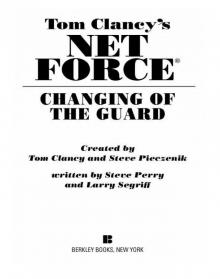 Changing of the Guard
Changing of the Guard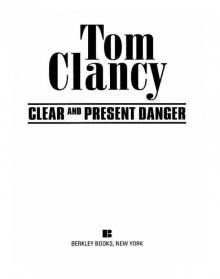 Clear and Present Danger
Clear and Present Danger Hounds of Rome
Hounds of Rome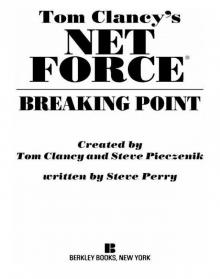 Breaking Point
Breaking Point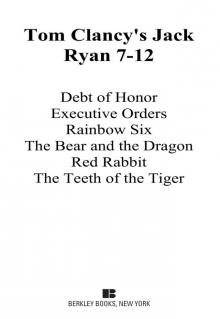 Tom Clancy's Jack Ryan Books 7-12
Tom Clancy's Jack Ryan Books 7-12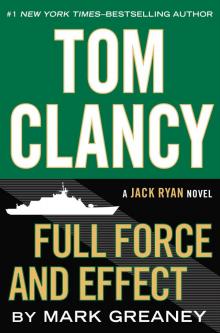 Full Force and Effect
Full Force and Effect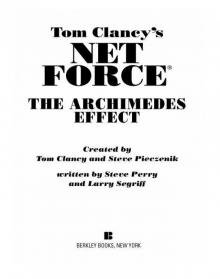 The Archimedes Effect
The Archimedes Effect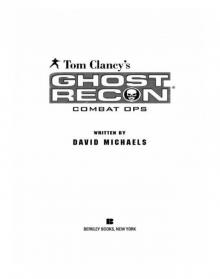 Combat Ops
Combat Ops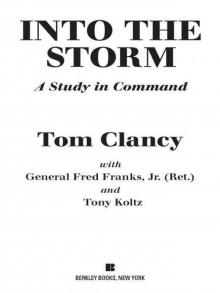 Into the Storm: On the Ground in Iraq
Into the Storm: On the Ground in Iraq Under Fire
Under Fire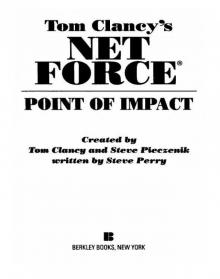 Point of Impact
Point of Impact Red Rabbit
Red Rabbit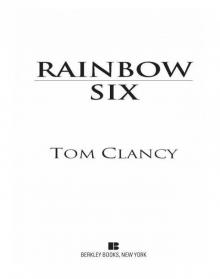 Rainbow Six
Rainbow Six The Hunt for Red October
The Hunt for Red October The Teeth of the Tiger
The Teeth of the Tiger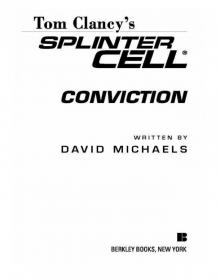 Conviction (2009)
Conviction (2009)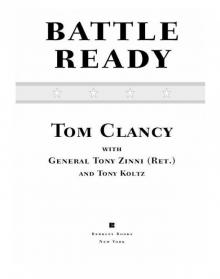 Battle Ready
Battle Ready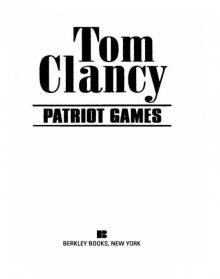 Patriot Games
Patriot Games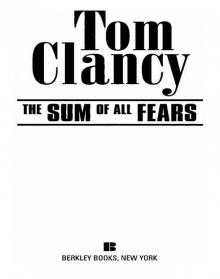 The Sum of All Fears
The Sum of All Fears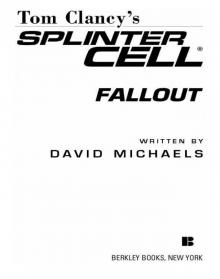 Fallout (2007)
Fallout (2007) Red Storm Rising
Red Storm Rising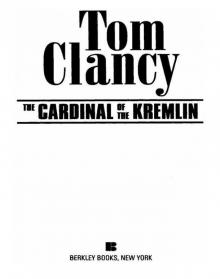 The Cardinal of the Kremlin
The Cardinal of the Kremlin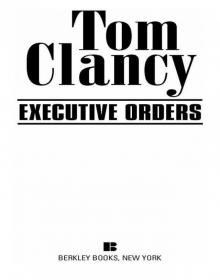 Executive Orders
Executive Orders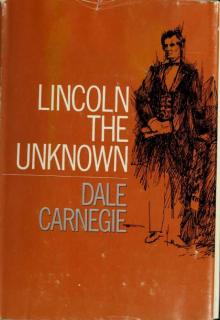 Lincoln, the unknown
Lincoln, the unknown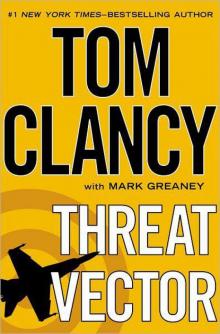 Threat Vector
Threat Vector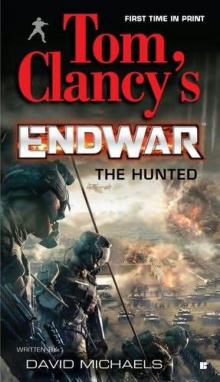 The Hunted
The Hunted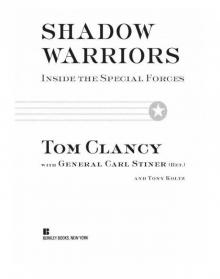 Shadow Warriors: Inside the Special Forces
Shadow Warriors: Inside the Special Forces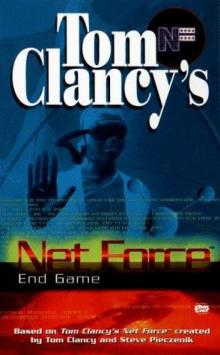 End Game
End Game Special Forces: A Guided Tour of U.S. Army Special Forces
Special Forces: A Guided Tour of U.S. Army Special Forces Locked On
Locked On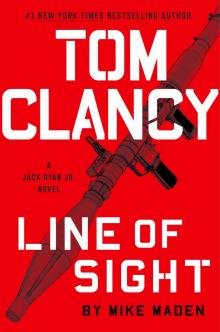 Line of Sight
Line of Sight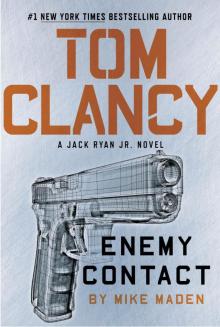 Tom Clancy Enemy Contact - Mike Maden
Tom Clancy Enemy Contact - Mike Maden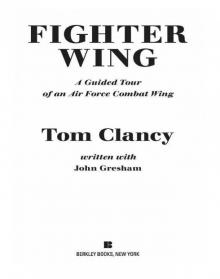 Fighter Wing: A Guided Tour of an Air Force Combat Wing
Fighter Wing: A Guided Tour of an Air Force Combat Wing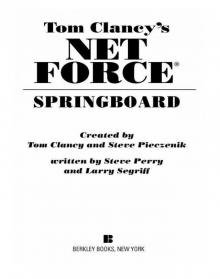 Springboard
Springboard Line of Sight - Mike Maden
Line of Sight - Mike Maden EndWar
EndWar Dead or Alive
Dead or Alive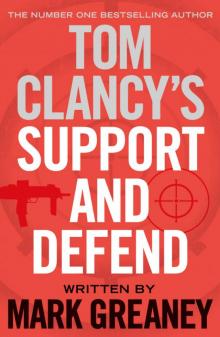 Tom Clancy Support and Defend
Tom Clancy Support and Defend Checkmate
Checkmate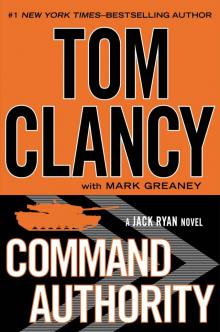 Command Authority
Command Authority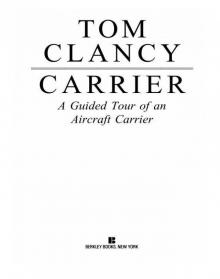 Carrier: A Guided Tour of an Aircraft Carrier
Carrier: A Guided Tour of an Aircraft Carrier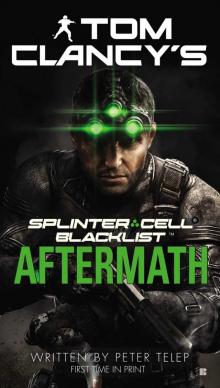 Blacklist Aftermath
Blacklist Aftermath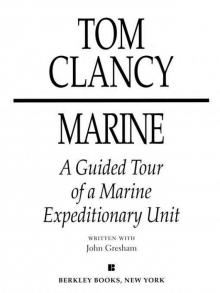 Marine: A Guided Tour of a Marine Expeditionary Unit
Marine: A Guided Tour of a Marine Expeditionary Unit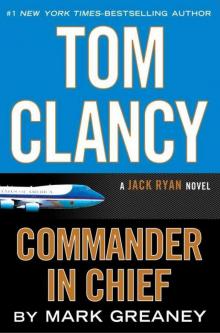 Commander-In-Chief
Commander-In-Chief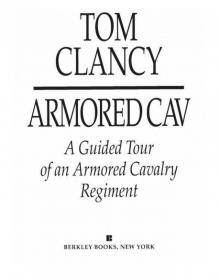 Armored Cav: A Guided Tour of an Armored Cavalry Regiment
Armored Cav: A Guided Tour of an Armored Cavalry Regiment Tom Clancy's Jack Ryan Books 1-6
Tom Clancy's Jack Ryan Books 1-6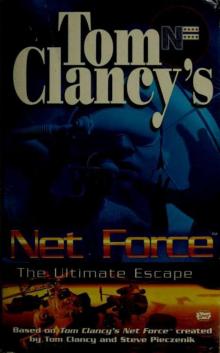 The Ultimate Escape
The Ultimate Escape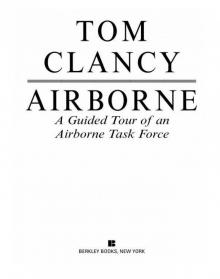 Airborne: A Guided Tour of an Airborne Task Force
Airborne: A Guided Tour of an Airborne Task Force Debt of Honor
Debt of Honor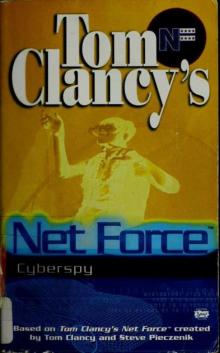 Cyberspy
Cyberspy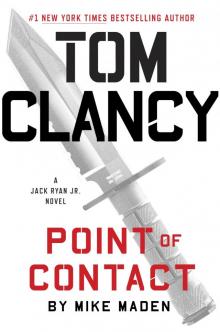 Point of Contact
Point of Contact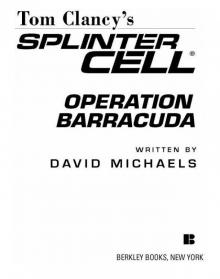 Operation Barracuda (2005)
Operation Barracuda (2005)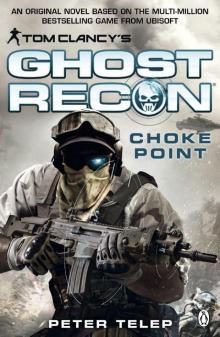 Choke Point
Choke Point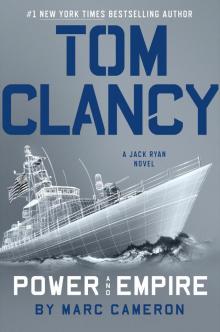 Power and Empire
Power and Empire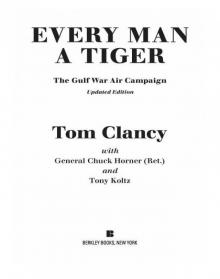 Every Man a Tiger: The Gulf War Air Campaign
Every Man a Tiger: The Gulf War Air Campaign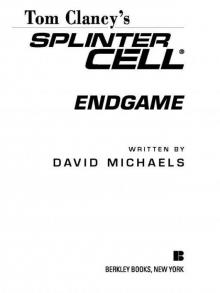 Endgame (1998)
Endgame (1998)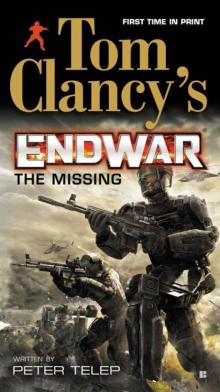 EndWar: The Missing
EndWar: The Missing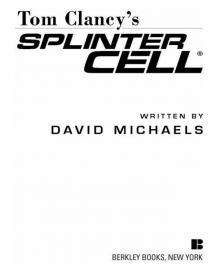 Splinter Cell (2004)
Splinter Cell (2004)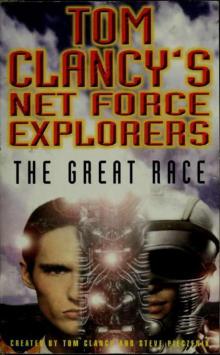 The Great Race
The Great Race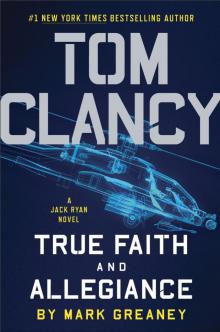 True Faith and Allegiance
True Faith and Allegiance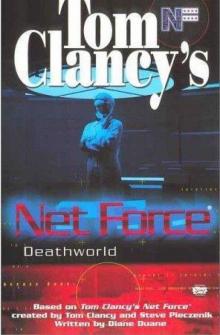 Deathworld
Deathworld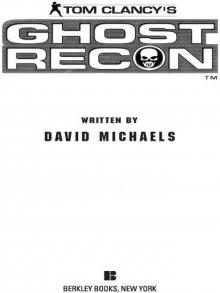 Ghost Recon (2008)
Ghost Recon (2008)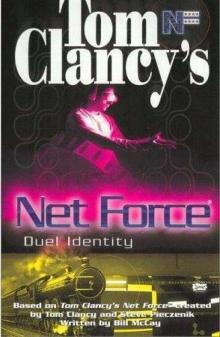 Duel Identity
Duel Identity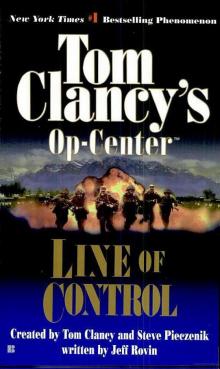 Line of Control o-8
Line of Control o-8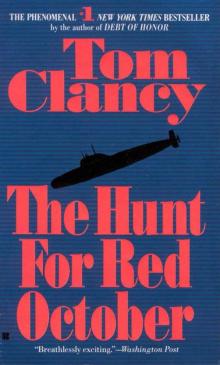 The Hunt for Red October jr-3
The Hunt for Red October jr-3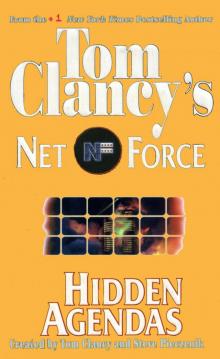 Hidden Agendas nf-2
Hidden Agendas nf-2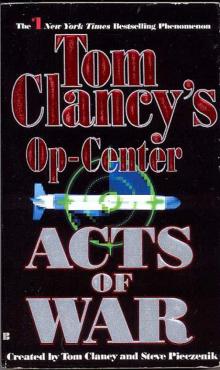 Acts of War oc-4
Acts of War oc-4 Ruthless.Com pp-2
Ruthless.Com pp-2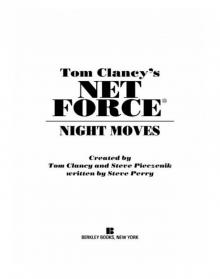 Night Moves
Night Moves The Hounds of Rome - Mystery of a Fugitive Priest
The Hounds of Rome - Mystery of a Fugitive Priest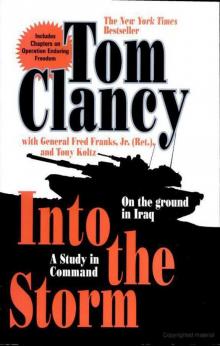 Into the Storm: On the Ground in Iraq sic-1
Into the Storm: On the Ground in Iraq sic-1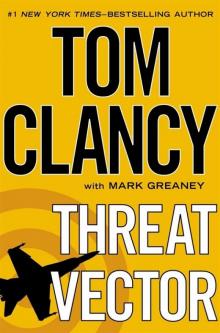 Threat Vector jrj-4
Threat Vector jrj-4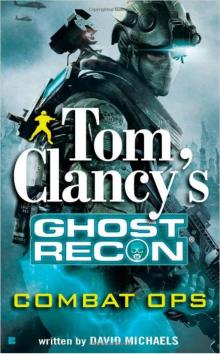 Combat Ops gr-2
Combat Ops gr-2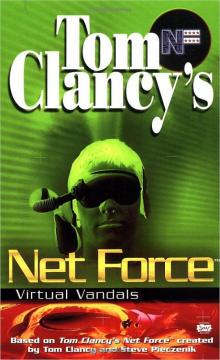 Virtual Vandals nfe-1
Virtual Vandals nfe-1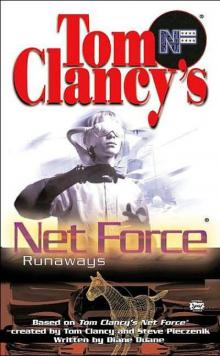 Runaways nfe-16
Runaways nfe-16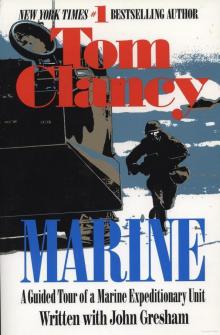 Marine: A Guided Tour of a Marine Expeditionary Unit tcml-4
Marine: A Guided Tour of a Marine Expeditionary Unit tcml-4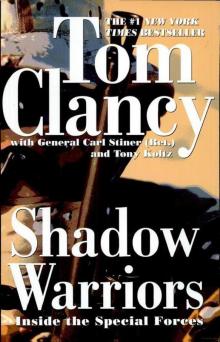 Shadow Warriors: Inside the Special Forces sic-3
Shadow Warriors: Inside the Special Forces sic-3 Jack Ryan Books 1-6
Jack Ryan Books 1-6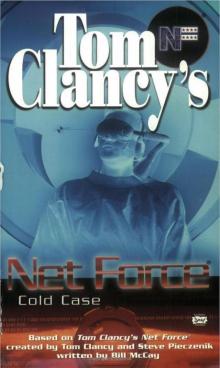 Cold Case nfe-15
Cold Case nfe-15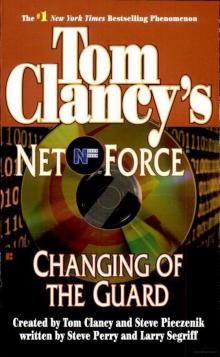 Changing of the Guard nf-8
Changing of the Guard nf-8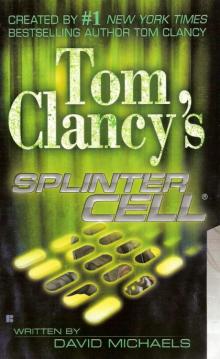 Splinter Cell sc-1
Splinter Cell sc-1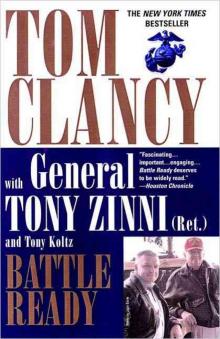 Battle Ready sic-4
Battle Ready sic-4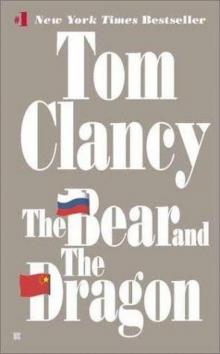 The Bear and the Dragon jrao-11
The Bear and the Dragon jrao-11 Fighter Wing: A Guided Tour of an Air Force Combat Wing tcml-3
Fighter Wing: A Guided Tour of an Air Force Combat Wing tcml-3 Patriot Games jr-1
Patriot Games jr-1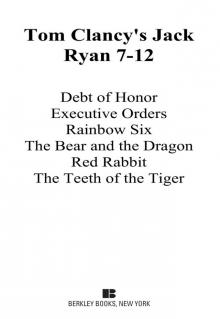 Jack Ryan Books 7-12
Jack Ryan Books 7-12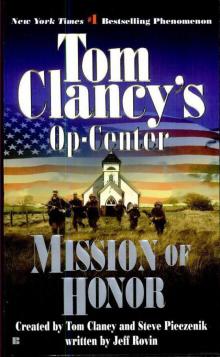 Mission of Honor o-9
Mission of Honor o-9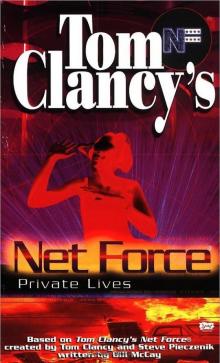 Private Lives nfe-9
Private Lives nfe-9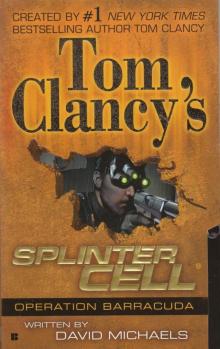 Operation Barracuda sc-2
Operation Barracuda sc-2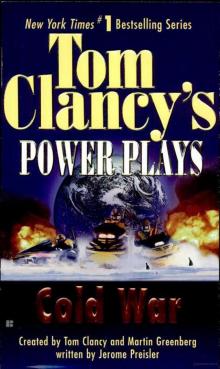 Cold War pp-5
Cold War pp-5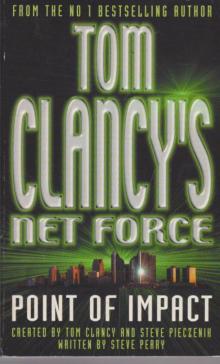 Point of Impact nf-5
Point of Impact nf-5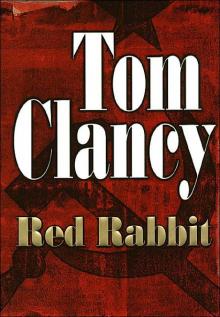 Red Rabbit jr-9
Red Rabbit jr-9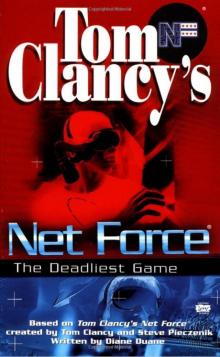 The Deadliest Game nfe-2
The Deadliest Game nfe-2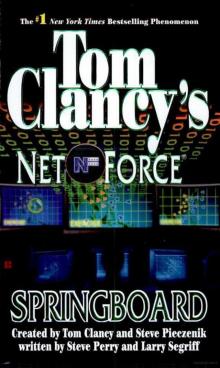 Springboard nf-9
Springboard nf-9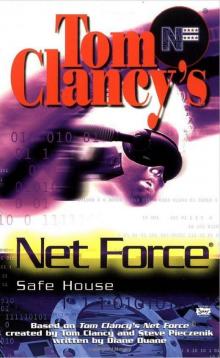 Safe House nfe-10
Safe House nfe-10 EndWar e-1
EndWar e-1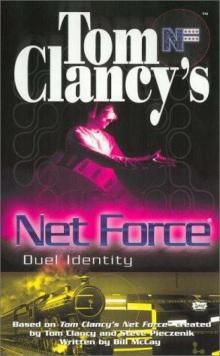 Duel Identity nfe-12
Duel Identity nfe-12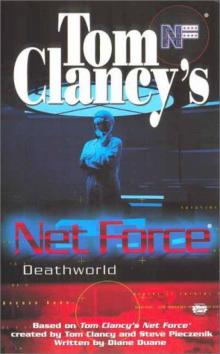 Deathworld nfe-13
Deathworld nfe-13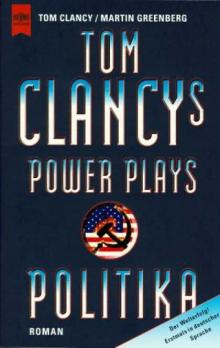 Politika pp-1
Politika pp-1 Rainbow Six jr-9
Rainbow Six jr-9 Tom Clancy's Power Plays 1 - 4
Tom Clancy's Power Plays 1 - 4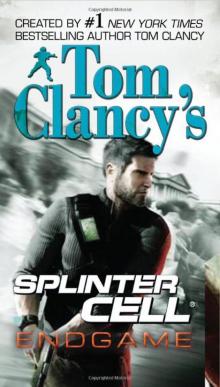 Endgame sc-6
Endgame sc-6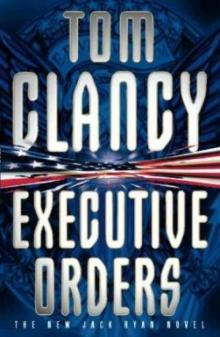 Executive Orders jr-7
Executive Orders jr-7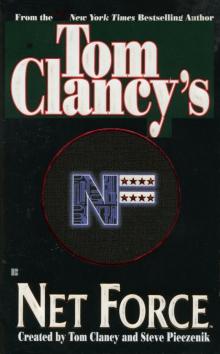 Net Force nf-1
Net Force nf-1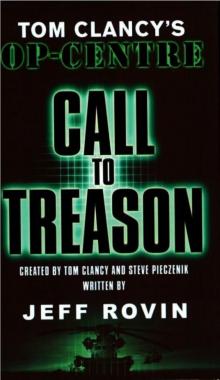 Call to Treason o-11
Call to Treason o-11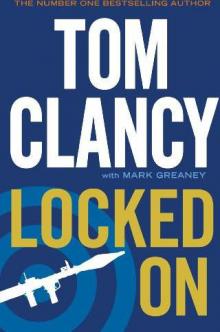 Locked On jrj-3
Locked On jrj-3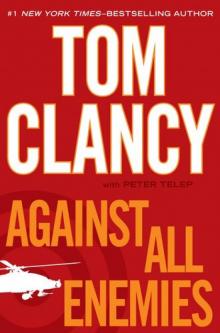 Against All Enemies
Against All Enemies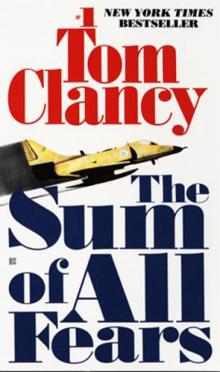 The Sum of All Fears jr-7
The Sum of All Fears jr-7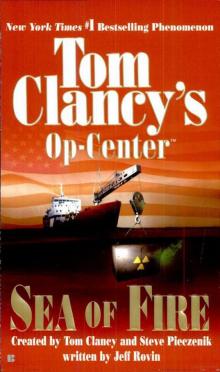 Sea of Fire o-10
Sea of Fire o-10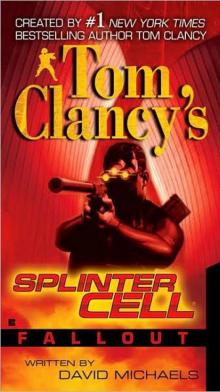 Fallout sc-4
Fallout sc-4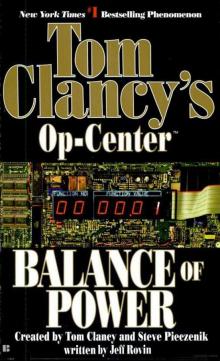 Balance of Power o-5
Balance of Power o-5 Shadow Watch pp-3
Shadow Watch pp-3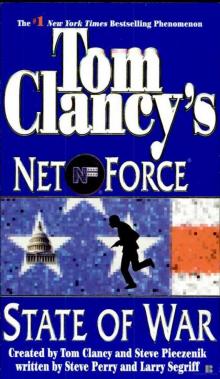 State of War nf-7
State of War nf-7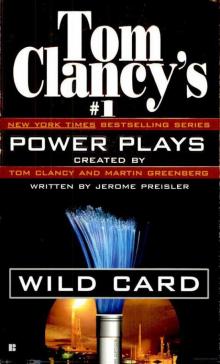 Wild Card pp-8
Wild Card pp-8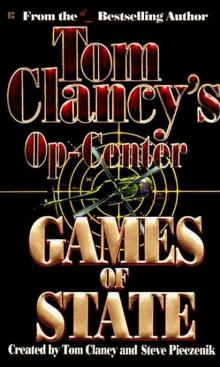 Games of State o-3
Games of State o-3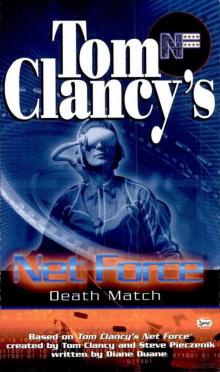 Death Match nfe-18
Death Match nfe-18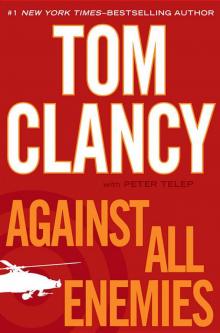 Against All Enemies mm-1
Against All Enemies mm-1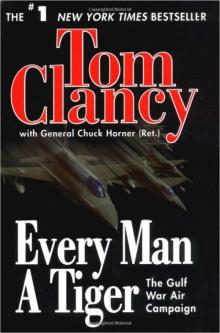 Every Man a Tiger: The Gulf War Air Campaign sic-2
Every Man a Tiger: The Gulf War Air Campaign sic-2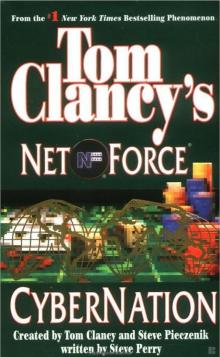 Cybernation nf-6
Cybernation nf-6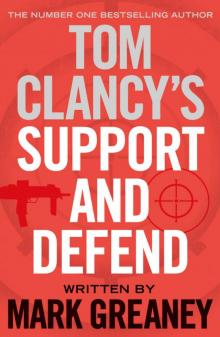 Support and Defend
Support and Defend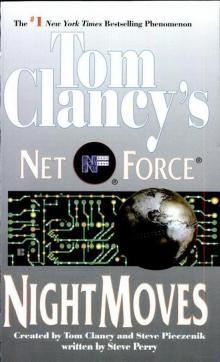 Night Moves nf-3
Night Moves nf-3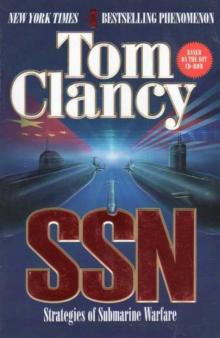 SSN
SSN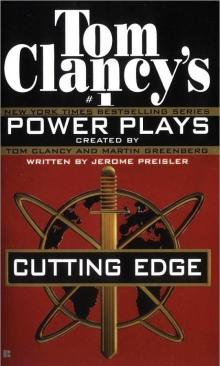 Cutting Edge pp-6
Cutting Edge pp-6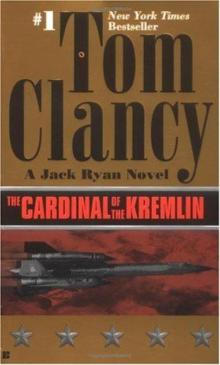 The Cardinal of the Kremlin jrao-5
The Cardinal of the Kremlin jrao-5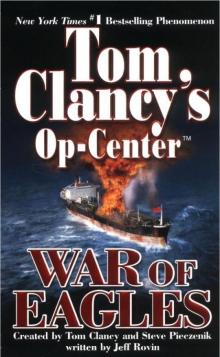 War of Eagles o-12
War of Eagles o-12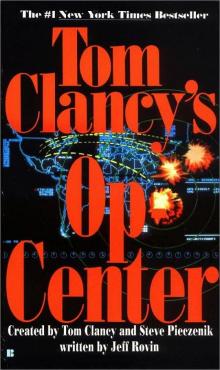 Op-Center o-1
Op-Center o-1 Mirror Image o-2
Mirror Image o-2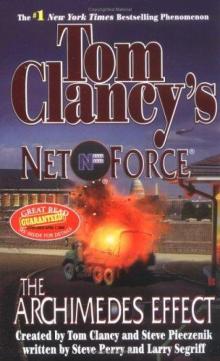 The Archimedes Effect nf-10
The Archimedes Effect nf-10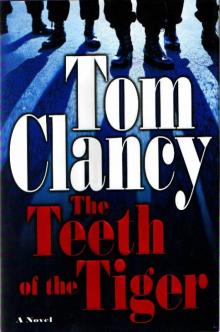 Teeth of the Tiger jrj-1
Teeth of the Tiger jrj-1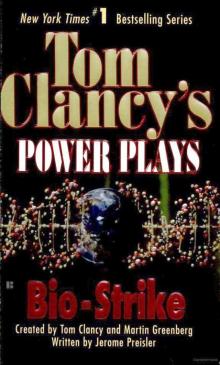 Bio-Strike pp-4
Bio-Strike pp-4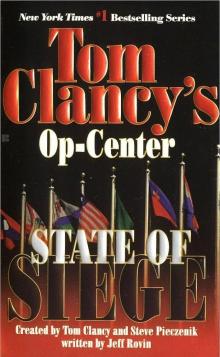 State of Siege o-6
State of Siege o-6 Debt of Honor jr-6
Debt of Honor jr-6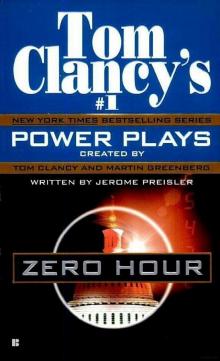 Zero Hour pp-7
Zero Hour pp-7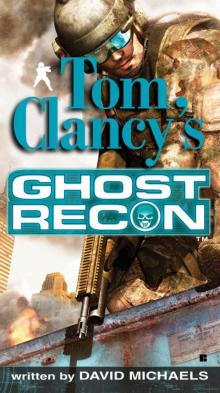 Ghost Recon gr-1
Ghost Recon gr-1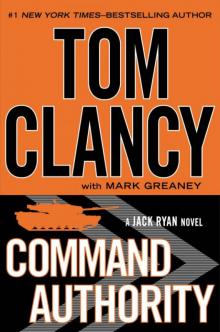 Command Authority jr-10
Command Authority jr-10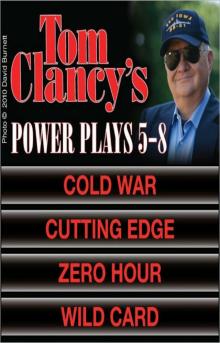 Tom Clancy's Power Plays 5 - 8
Tom Clancy's Power Plays 5 - 8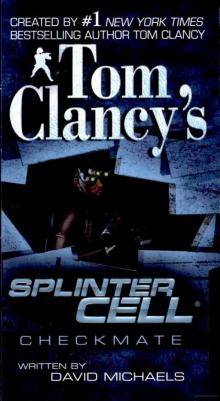 Checkmate sc-3
Checkmate sc-3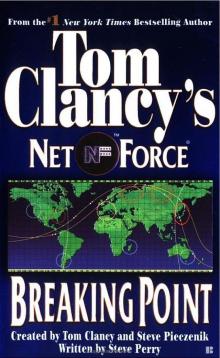 Breaking Point nf-4
Breaking Point nf-4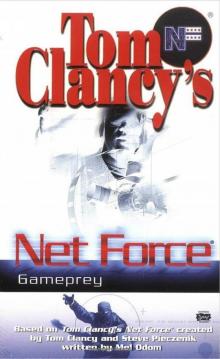 Gameprey nfe-11
Gameprey nfe-11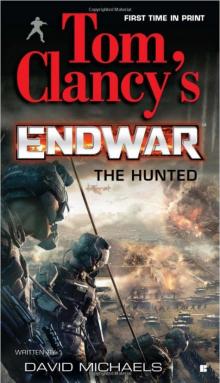 The Hunted e-2
The Hunted e-2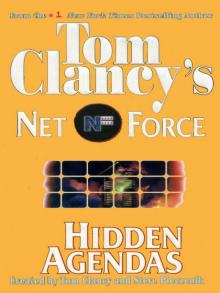 Hidden Agendas
Hidden Agendas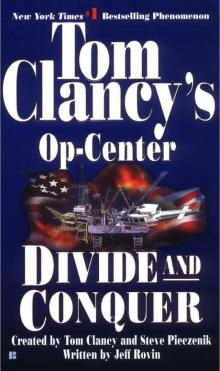 Divide and Conquer o-7
Divide and Conquer o-7